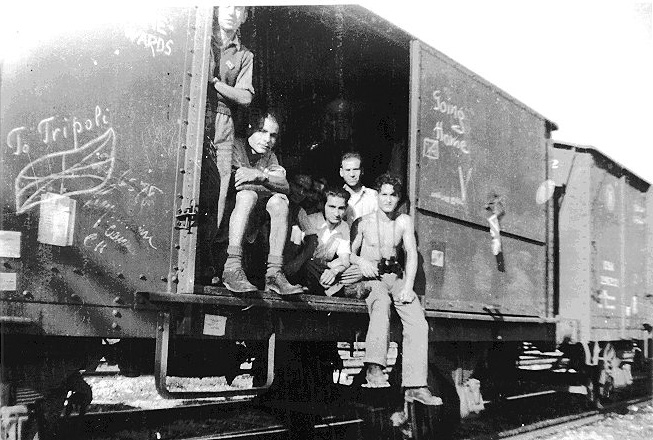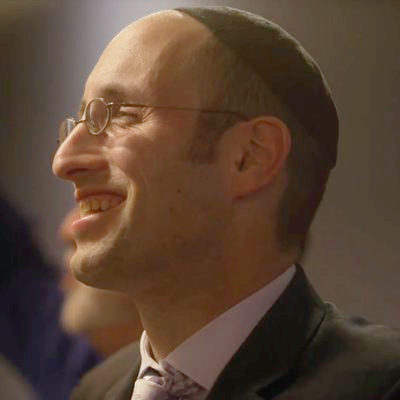The Nation of the Dry Bones
One of the most remarkable prayer services in the history of Judaism.

In April 1945, the BBC’s Patrick Walker described to the world one of the most remarkable Jewish prayer services in the history of Judaism. It took place on a Friday afternoon, on the eve of the Sabbath in Bergen-Belsen, only days after the concentration camp had been liberated. The worshippers, survivors all, had not participated in a minyan in years. The prayers concluded with words Walker assumed were standard Sabbath liturgy but were actually the words of “Hatikvah,” the anthem of the Zionist movement, and later of the State of Israel. As their voices faded, one of the chaplains leading the service declaimed three Hebrew words, a clarion call that can still be heard on the recording of the broadcast: Am Yisrael chai, the people of Israel liveth!
Walker was witness to what would become the perfect embodiment of the current period of the Jewish calendar, when Israel and world Jewry mark, one week apart, the worst and then the most miraculous moments in Jewish Diaspora history: first Yom Ha’shoah, the commemoration of the Holocaust, and then Yom Ha’atzmaut, Israeli Independence Day.
In order to understand why this is so, we can begin with the Jewish chaplain whose final words defined the service, and whose later recollections and obituaries allow us to see the moment through his eyes. Leslie Hardman, staffed to Britain’s second army, had not been with the troops when the camp was liberated but was told two days later, “Keep a stiff upper lip. We’ve just been into Belsen concentration camp and it’s horrible; but you have got to go there—you’ll find a lot of your people.” He first encountered a Jewish woman whose decrepit appearance was so horrifying that he instinctively backed away, provoking her to cry out in Yiddish, “Farloz mir nit!! Geh nit avek fun mir!” Do not leave me! Do not go away from me!
Hardman walked with her and then saw the others: “Towards me came what seemed to be the remnants of a holocaust—a staggering mass of blackened skin and bones, held together somehow with filthy rags,” he recalled. “‘My God, the dead walk,’ I cried aloud, but I did not recognize my voice.”
All too soon he would learn that the “walking dead” were the lucky ones. The British had created mass graves for the dead. Hardman protested at the lack of respect but was told, “Padre, we’ve got to get them under the ground. Otherwise, we’ll all suffer from typhus.” Thus were Jews buried by the thousands, denied everything in death as they were in life. One haunting photograph captures Hardman standing all alone at a mass grave, reciting Kaddish. Among the bodies over whom he prayed was very possibly Anne Frank, who had died of typhoid at Belsen months before. The experience would remain with Hardman, a dedicated Zionist, his entire life.
In this, he was not alone. Joining Hardman in praying for the dead and ministering to the survivors was another ardent Zionist, Hermann Helfgott, a Hungarian rabbi serving in the Yugoslavian army who had himself just been freed from a POW camp. In an interview with Yad Vashem, Helfgott recounted how one survivor, a mother, had beseeched him to defy British policy and bury her dead daughter in a single grave. This he did in the dark of night, but the prayers, he reported, were offered not by him but by the mother herself: “She looked up to Heaven and she said, ‘Master of the Universe’—in Yiddish—‘I thank You for the great privilege You gave me today of burying my daughter with my own hands. Amen.’ From that moment on, I have to say, I was a different man.”
Hardman and Helfgott can be seen standing side by side at the Sabbath service that Patrick Walker witnessed and called “probably the first Jewish service held on German soil in absolute security without fear for a decade.” Walker’s report can be heard on YouTube today: “Around us lay the corpses that there had not been time to clear away, even after five days. During the service, the few hundred people gathered together were sobbing openly, with joy at their liberation and with sorrow at the memory of their parents and brothers and sisters that had been taken from them and gassed and burned. These people knew they were being recorded. They wanted the world to hear their voice. They made a tremendous effort, which quite exhausted them.”
Then there comes “Hatikvah,” with one woman’s voice swelling amid the others. What we hear are the original lyrics, penned by Naftali Herz Imber: “Our hope is not yet lost / the ancient hope / to return to the land of our forefathers / and to the city settled by David.” They were not, as Hardman had first thought, “walking dead”; no, they were Jews whose bodies had been ravaged but whose souls were still vibrant within.
What Patrick Walker did not know is that what was taking place was an almost literal reenactment of the biblical story that inspired “Hatikvah.” The prophet Ezekiel is shown a valley filled with dry bones that miraculously come to life for the purpose of returning to the chosen land: “Behold, they say, Our bones are dried, and our hope is lost…. Therefore prophesy and say unto them, Thus saith the Lord God; Behold, O my people, I will open your graves, and cause you to come up out of your graves, and bring you into the land of Israel.”
Our hope is lost, in Hebrew, is “odvah tikvateinu.” Imber’s song lyric runs “od lo avda tikvateinu”—our hope is not lost. At Belsen, biblical and contemporary times merged. The Jews were literally surrounded by skeletons and were themselves a “staggering mass of blackened skin and bones.” But they found within themselves the wellsprings of hope, illustrating why am Yisrael chai and embodying the conclusion of Imber’s original lyrics: “Hear, my brothers in the lands of exile / The voice of one of our visionaries / that only with the very last Jew / There is the end of our hope!”
Hardman would soon officiate at the wedding of Norman Turgel, a British-Jewish soldier who had fallen in love with a survivor of Belsen named Gena Goldfinger. Gena’s wedding dress, made from a British parachute, is on permanent display at London’s Imperial War Museum. It is an extraordinary artifact, but it is perhaps exceeded, in sublime simplicity, by a ketubah—a Jewish marriage contract composed from memory by Hermann Helfgott for another bride and groom at the camp. It records, as has every ketubah for two millennia, the location and content of the Jewish wedding: In “Bergen Belsen,” we are told, a groom named Moshe said to the bride Miriam, “Be unto me a wife according to the laws of Moses of Israel, and I will cherish, honor, support, and maintain you in accordance with the custom of Jewish husbands who cherish, honor, support, and maintain their wives faithfully.” Many years later, Helfgott would visit the couple, living in northern Israel, and see that his handiwork had been accurate—the living vindication of Ezekiel’s ancient vision.
As indeed is Israel itself. Decades after this service, an Israeli by the name of Oran Aviv described attending her son’s ceremony of initiation into the IDF. She was unmoved by the fanfare, until “Hatikvah” was sung: “My thoughts were with my mother, who 64 years earlier, in perhaps the most horrific nightmare ever known to mankind, sang this same song.” The woman we hear in the BBC recording was her mother, Cesia Einhorn, “full of determination, wanting the whole world to know that despite all that she and others had suffered through, they had not lost their hope and still dreamed of returning one day to Zion.” Oran Aviv wept as she watched her child, Cesia’s grandson, become an officer in a Jewish army “that did not exist 64 years ago to save these concentration camp prisoners. My mother’s hope and determination were not for naught.”
Those whom Leslie Hardman saw initially as the weakest specimens of humanity revealed themselves to be among the strongest individuals in all of history. They hoped, and they were lifted from the grave, and embodied the endurance of an eternal nation.
This essay was originally published in Commentary.
One of the most remarkable prayer services in the history of Judaism.
One of the most remarkable prayer services in the history of Judaism.

